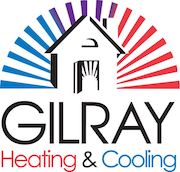
If you’re amid the usual American households who shell out more than $2,000 annually on energy expenses, installing a smart thermostat is a fantastic approach to keep energy costs managed. Although the majority ofresidences have programmable thermostats, yours probably isn’t being used to the full advantage as it’s on “hold” all the time.
When upgrading your thermostat, the Nest smart thermostat is one of the best sellers. That’s because it learns your temperature preferences and schedule, and then makes an energy-efficient schedule to match. You can also keep an eye on it and raise it from nearly anywhere with your smartphone.
On average, Nest says its thermostat saves about 10-12% on heating expenses and about 15% on cooling costs. That’s about $131 to $145 saved annually, which helps it pay for itself quicker than two years. And many utility companies have rebate programs that help you purchase a smart thermostat for free or close to it.
When you’re installing a smart home thermostat, you’ll want to ensure it’s compatible with your HVAC system. This is especially important if your equipment is aging. If it’s not, you may run into issues, like weird furnace or air conditioner behavior. That’s why it’s important to have a specialist like Gilray Heating and Cooling help you pick a new thermostat and take care of your smart thermostat installation.
Here’s how to determine if the Nest is compatible with your HVAC system.
Nest Runs with the Majority of Heating and Cooling Systems
The good news is that Nest created its thermostat to operate with many different 24-volt systems, including aging ones.
This involves heating and cooling systems powered by:
- Natural gas
- Oil
- Electricity
Before you purchase a Nest, you can put your details into the Compatibility Checker to ensure a simple transition. Once you’ve double-checked it’s a fit, your Nest will guide you through compatibility and wiring when you set it up.
The Nest Learning Thermostat is compatible with the widest types of home comfort systems, like heat pumps, furnaces and air conditioners. It also works with highly energy-efficient multistage systems, dual-fuel equipment, humidifiers and dehumidifiers, but you’ll often need a specialist like Gilray Heating and Cooling to complete the in-depth wiring and setup steps.
Does the Nest Require a C-Wire?
If you’ve done research on the Nest, you’ve likely found details about the C-wire, or common wire. This wire powers your smart thermostat when it can’t draw ample power from the other wires.
If you don’t have a C-wire, it’s likely still ok to use a Nest. The company says its thermostats were created to consume not much power. Many times, this means they can run correctly without this wire.
Have a smart thermostat without a C-wire and noticing strange heating and cooling behavior? An HVAC professional like Gilray Heating and Cooling can install a C-wire for you.
Our Experts Make Smart Thermostat Installation Easy
Installing a new thermostat makes it simple to keep track of your heating and cooling expenses while keeping your {house|residences|home cozy. If you’re considering adding a Nest smart thermostat to your home, Gilray Heating and Cooling can help you find the best model for your home and then skillfully install it. Give us a call at 715-301-0727 to get started right away!
